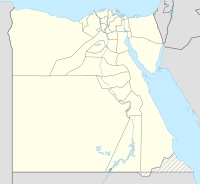| Action of Agagia | |||||||
|---|---|---|---|---|---|---|---|
| Part of the Senussi Campaign of the First World War | |||||||
 Map showing Agagia | |||||||
| |||||||
| Belligerents | |||||||
|
| |||||||
| Commanders and leaders | |||||||
| Jaafar Pasha (POW) |
William Peyton Henry Lukin | ||||||
| Strength | |||||||
| 1,500–1,600 | 1,400 | ||||||
| Casualties and losses | |||||||
| c. 500 |
47 killed 137 wounded | ||||||
Agagia, south-east of Sidi Barrani, Matruh Governorate, Egypt | |||||||
The Action of Agagia (also Agagiya, Aqqaqia or Aqaqia) took place east of Sidi Barrani in Egypt on 26 February 1916, during the Senussi Campaign between German and Ottoman-instigated Senussi forces and the British army in Egypt. On 11 December 1915, a British column had been attacked at Duwwar Hussein along the Matruh–Sollum track. In the Affair of Wadi Senba, the Senussi were defeated and two days later a Senussi attack at Wadi Hasheifiat was repulsed. The British returned to Matruh until 25 December, then surprised the Senussi at the Affair of Wadi Majid but the Senussi got away. At the Affair of Halazin on 23 January, the Senussi were defeated and again slipped away.
In February 1916, the Western Frontier Force (Major-General William Peyton), was reinforced and a British column advanced west along the coast, to re-capture Sollum in February; en route, a Senussi encampment at Agagiya was spotted by aircraft. On 26 February, the column attacked the Senussi at Agagiya and captured Jaafar Pasha, commander of the Senussi forces on the coast. As the Senussi retreated, they were cut off by a Dorset Yeomanry cavalry charge; the Yeomen lost half their horses and about a third of their riders but dispersed the column, caused about 500 casualties, took 39 prisoners, captured the Senussi baggage train and pursued the survivors into the desert. Sollum was re-occupied by the British on 14 March 1916, which ended the coastal campaign.
